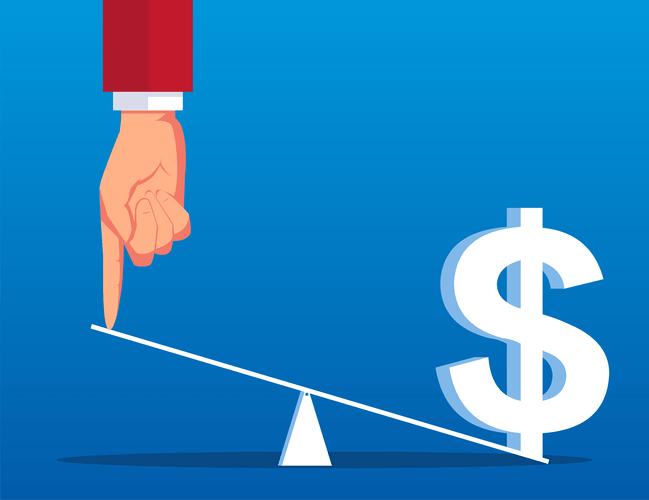Total Debt-to-Total Assets Ratio: Meaning, Formula, and What’s Good
What is a credit note? And when to use one
07/12/2021Вплив ГСЧ на гру в казино
20/12/2021
Instead, they should be used in combination with other ratios or financial metrics to give a fuller picture of both a company’s financial state and how it compares to other companies in the same industry. Ratio analysis is often used by investors, but it can also be used by the company itself to evaluate how strategic changes have impacted sales, growth, and performance. The second comparative data analysis you should perform is industry analysis. In order to perform industry analysis, you look at the debt-to-asset ratio for other firms in your industry. If, for instance, your company has a debt-to-asset ratio of 0.55, it means some form of debt has supplied 55% of every dollar of your company’s assets. If the debt has financed 55% of your firm’s operations, then equity has financed the remaining 45%.

What Industries Have High D/E Ratios?
A lower debt ratio often signifies robust equity, indicating resilience to economic challenges. Conversely, a higher ratio may suggest increased financial risk and potential https://www.bookstime.com/articles/net-realizable-value difficulty in meeting obligations. These liabilities can also impact a company’s financial health, but they aren’t considered within the traditional debt ratio framework.
Leverage Trends
- Although marketing communication has clear benefits, it can also be a nuisance (or even worse).
- We endeavor to ensure that the information on this site is current and accurate but you should confirm any information with the product or service provider and read the information they can provide.
- It is not equivalent to total liabilities because it excludes non-debt liabilities such as accounts payable, salaries payable, etc.
- By reducing debt, a company can improve its financial position and lower its debt to assets ratio.
- For example, a company’s existing current ratio may be 1.1; if the company wants to become more liquid, it may set the internal target of having a current ratio of 1.2 by the end of the fiscal year.
- A D/E ratio of 1.5 would indicate that the company in question has $1.50 of debt for every $1 of equity.
Debt ratio provides insights into a company’s capital structure by showcasing the balance between debt and equity. A lower debt ratio often suggests that a company has a strong equity base, making it less vulnerable to economic downturns or financial stress. The debt ratio offers stakeholders a quick snapshot of a company’s financial stability. In contrast, companies looking to expand or diversify might again increase borrowing, potentially raising the ratio. Understanding where a company is in its lifecycle helps contextualize its debt ratio.
- An interested investor might also want to look at other key considerations like an organization’s profit margins and quick ratio, for example.
- Many investors look for a company to have a debt ratio between 0.3 and 0.6.
- Business managers and financial managers have to use good judgment and look beyond the numbers in order to get an accurate debt-to-asset ratio analysis.
- For example, if the average P/E ratio of all companies in the S&P 500 index is 20, and the majority of companies have P/Es between 15 and 25, a stock with a P/E ratio of seven is probably undervalued.
- The debt ratio offers stakeholders a quick snapshot of a company’s financial stability.
Evaluating Risk and Solvency

By examining a company’s debt ratio, analysts and investors can gauge its financial risk relative to peers or industry averages. For instance, capital-intensive industries such as utilities or manufacturing might naturally have higher debt ratios due to significant infrastructure and machinery investments. Stakeholders, especially creditors, may view a high debt ratio as an increased risk, potentially impacting the company’s borrowing costs and terms. In the context of the debt ratio, total assets serve as an indicator of a company’s overall resources that could be utilized to repay its debt, if necessary. A total debt-to-total asset ratio greater than one means that if the company were to cease operating, not all debtors would receive payment on their holdings.
What is your risk tolerance?
An example of a benchmark set by a lender is often the debt service coverage ratio, which measures a company’s cash flow against its debt balances. If a company doesn’t maintain certain levels for these ratios, the loan may be recalled or the interest rate attached to that loan may increase. Economic conditions, such as interest rates and market volatility, can impact a company’s debt to assets ratio. During periods of economic downturn or recession, companies may struggle to generate sufficient cash flow, leading to an increase in the ratio.
• Working capital

On the other hand, a lower debt-to-total-assets ratio may mean that the company is better off financially and will be able to generate more income on its assets. A higher debt-to-total-assets ratio indicates that there are higher risks involved because the company will have difficulty repaying creditors. The debt-to-total-assets debt to asset ratio ratio is important for companies and creditors because it shows how financially stable a company is. JPM & WFC both are financial services companies and hence competitors and their debt ratios for the four years are remarkably different than the debt ratios of TGT and DG, which are retailers.

- A high ratio indicates that a company may be at risk of default on its loans if interest rates suddenly rise.
- Once you have these figures calculating through the rest of the equation is a breeze.
- A high debt to asset ratio typically indicates risk, whereas a low debt to asset ratio speaks of a stable financial situation.
- There is a sense that all debt ratio analysis must be done on a company-by-company basis.
- A business whose debt to asset ratio is above one indicates that its funds are entirely covered by debt or alternative financing.
